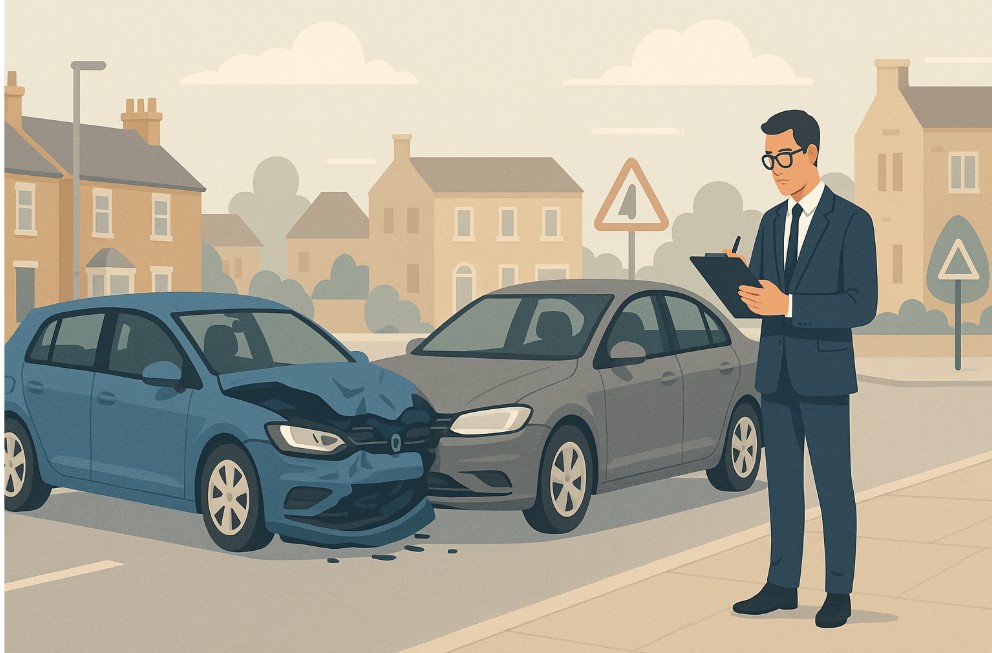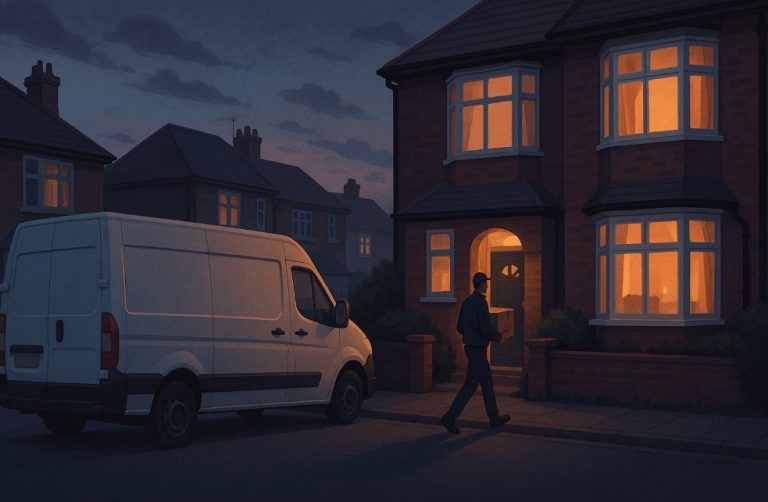What Does Third Party Insurance Cover?
Is third party insurance truly enough for drivers navigating the UK’s roads? What does it actually cover, and more importantly, what does it leave out? Is it still the cheapest option, or has that changed? These are critical questions for anyone comparing car insurance types in an increasingly complex market.
Understanding the different levels of vehicle insurance available in the UK is not just about compliance it’s about making sure you’re not left financially exposed in the event of an accident.
Many drivers choose third party insurance because it satisfies the legal minimum requirement. However, what’s included in that “minimum” may be far less than expected when you need to make a claim.
This guide explores the inclusions, exclusions, and suitability of third party car insurance, compares it with third party, fire and theft (TPFT) and fully comprehensive policies, and provides insight into which type of cover is right based on your vehicle, driving habits, and budget.
What Is Third Party Insurance?

Third party insurance is the minimum legal level of car insurance in the UK, required for any vehicle to be driven or kept on public roads. Its primary function is to protect other people from the costs of damage or injury that you, as the driver, may cause.
The term “third party” refers to anyone who is not you (the policyholder) or your insurance provider. If you cause an accident, the third party might be the other driver involved, a pedestrian, a cyclist, or even a property owner whose property is damaged.
Unlike fully comprehensive policies, third party insurance does not offer protection for your own vehicle. This means that if your car is damaged in an accident for which you are at fault, the repair or replacement costs will come out of your own pocket.
In summary, this policy ensures that others are financially protected if you’re responsible for an accident—but not you or your vehicle.
What Does Third Party Insurance Cover?
A third party insurance policy typically includes the following protections:
- Damage to someone else’s vehicle or property: If you’re at fault in a collision, the cost to repair or replace the third party’s car or property is covered.
- Injury to other individuals: Medical costs and compensation for injuries sustained by other drivers, pedestrians, or cyclists are included.
- Passengers in your car: Injuries sustained by your passengers during an accident are also generally covered.
What’s important to understand is that these policies are designed entirely around protecting the third party. You are fulfilling your legal obligation, but not necessarily safeguarding your own finances.
What Is Not Covered Under Third Party Insurance?

The limitations of third party insurance are significant and must be fully understood before purchasing such a policy.
Your policy will not cover:
- Damage to your own vehicle in any circumstance where you are at fault
- Theft of your vehicle, whether partial (e.g. parts or belongings stolen) or total
- Fire damage, regardless of whether the cause was accidental or deliberate
- Medical expenses for the driver, including treatment, rehabilitation, or loss of income
- Repair costs after vandalism or other non-accident-related incidents
You would be responsible for these costs yourself unless you can recover damages from another driver or via other legal routes.
What Happens If You’re Involved in an Accident and Only Have Third Party Cover?
The outcome of an accident depends on who is at fault, and whether their insurance provider will accept liability.
If You Are at Fault
Your third party insurer will cover the cost of repairs and compensation to the other driver or affected third parties. This includes medical costs, vehicle repairs, and property damage.
However, you will need to pay for your own vehicle’s repairs, and your no-claims discount is likely to be reduced or lost, depending on your insurer’s terms.
If You Are Not at Fault
If another driver is responsible for the incident, their insurance provider should pay for your damage and any injuries.
However, your own insurer will not help you make the claim, and you may need to pursue compensation through a third-party claims service, which could involve additional fees.
In this case, your no-claims bonus typically remains unaffected, unless a claim is made against you.
What Is Third Party, Fire and Theft Insurance and What Does It Include?

Third Party, Fire and Theft (TPFT) policies are a step up from third party only cover. They include everything that third party insurance does, and additionally provide protection against:
- Theft: If your car is stolen and cannot be recovered, or if it’s recovered with damage, your policy covers replacement or repairs.
- Fire damage: Whether caused by arson or accident, fire-related repairs or total loss are included.
- Damage from attempted theft: Some policies also cover broken locks, smashed windows, or damaged electronics like radios or sat-navs following a break-in.
This makes TPFT an attractive option for drivers with vehicles that are moderately valuable, or for those in areas with higher rates of vehicle theft.
What’s the Difference Between Third Party, TPFT, and Fully Comprehensive Insurance?
When comparing the main types of insurance, the differences in coverage are clear. The table below provides an overview of what each policy level typically includes.
| Reason for Claim | Third Party | TPFT | Comprehensive |
| Damage to other vehicles or property | Yes | Yes | Yes |
| Injury to third parties | Yes | Yes | Yes |
| Theft of your vehicle | No | Yes | Yes |
| Fire damage to your vehicle | No | Yes | Yes |
| Accidental damage to your own vehicle | No | No | Yes |
| Injury to yourself (driver) | No | No | Yes |
| Vandalism or malicious damage | No | No | Often included |
Understanding these distinctions is essential, especially if you’re weighing up the value vs cost of each policy.
Is Third Party Insurance Really the Cheapest Option?
There’s a widespread belief that third party insurance is the most affordable option. However, this is not always true. Insurers sometimes consider drivers who choose third party policies as higher risk, leading to unexpectedly higher premiums.
According to market data, third party and TPFT policies often cost more than fully comprehensive policies for some drivers. This is particularly common for younger drivers or those in high-claim postcodes.
Cost-effectiveness depends on multiple factors including:
- Driver age and experience
- Car make and model
- Location
- Annual mileage
- Driving history
Always compare quotes across policy types, as you may find comprehensive policies with broader protection at a similar or even lower price.
When Is Third Party or TPFT Insurance a Suitable Option?

These policies can still be a wise choice under certain circumstances.
- If you drive a low-value vehicle that would be inexpensive to replace
- If you are a confident driver and rarely use your car
- If you’re able to afford repairs out of pocket in the event of an incident
- If you live in a low-theft-risk area
However, even in these cases, a comparison with comprehensive policies is essential. Some drivers assume third party is always the most economical route, only to find it offers less value for their money.
How Much Does Third Party, Fire and Theft Insurance Cost?
On average, TPFT insurance sits between third party only and fully comprehensive cover in terms of cost.
According to recent figures, the average annual premium for TPFT is approximately £1,658. But actual premiums vary significantly depending on personal circumstances.
Factors that influence the cost of any car insurance policy include:
- Age of the driver
- Driving history and licence type
- Conviction or claims record
- Vehicle make, model, and age
- Where the vehicle is kept
- Occupation and job-related usage
Sometimes, because of perceived higher risk, third party and TPFT premiums are not cheaper than comprehensive quotes. Always review a variety of quotes using comparison tools before deciding.
Conclusion: Which Insurance Policy Should You Choose?
Choosing the right level of cover is a personal decision that must take into account both financial and lifestyle factors. While third party insurance meets legal requirements, it offers minimal protection for the policyholder.
Third Party, Fire and Theft offers some additional safeguards but still falls short in a collision scenario.
For many drivers, particularly those with new or high-value cars, fully comprehensive insurance delivers far greater peace of mind and may even cost less.
Before purchasing any policy:
- Assess the value of your vehicle
- Consider how often and where you drive
- Compare policy levels and quotes carefully
- Understand what’s excluded as well as included
Being underinsured can cost significantly more in the long run than the amount saved on a cheaper policy.
FAQs
What does third party insurance legally cover in the UK?
It covers injury or damage caused to third parties, including other vehicles, people, and property, but not your own vehicle or injuries.
Can I upgrade third party insurance to include theft or fire?
Yes, by choosing a Third Party, Fire and Theft policy, which includes additional protections without going fully comprehensive.
Is personal accident cover included in third party insurance?
No. You would need to purchase personal injury cover as an optional extra or choose a comprehensive policy that includes it.
Can I still drive other vehicles on third party insurance?
Some policies include this benefit, but it’s not standard. Always check your specific policy documents.
How can I reduce my third party insurance premium?
Using a black box, increasing your voluntary excess, or opting for specialist insurance like learner or temporary car cover can help reduce costs.
Does TPFT insurance include cover for vandalism?
No, TPFT does not usually include cover for vandalism. Comprehensive policies are more likely to offer this benefit.
Why is third party insurance sometimes more expensive?
Statistically, third party policyholders are more likely to make claims, leading to increased premiums despite offering less coverage.







